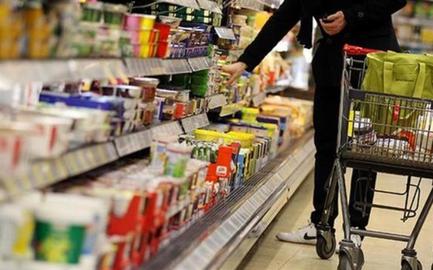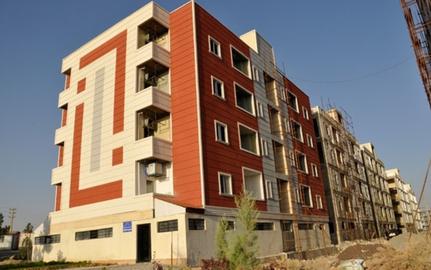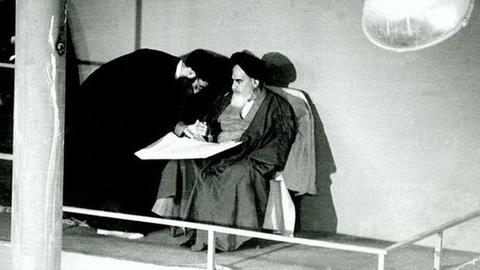Iran’s inflation rate has exceeded 52 percent compared with last year, and the number of Iranians living below the absolute poverty line continues to rise, a new study by the Statistical Center of Iran reveals. [Persian PDF].
The report, published on Wednesday, May 22, emphasises that the most recent inflation rate of 52 percent — a comparison of the Iranian calendar month of Ordibehesht (April 21-May 21) for this year and 2018 — is a record for Iran’s economy, amounting to a full-fledged economic and social disaster.
According to the report, in the same one-year period, food prices increased by 83 percent and non-food items by 40 percent. This means an average Iranian household now pays more than 1.8 times for food and 40 percent more for housing and transportation than it did last year.
At the same time, the report reveals some encouraging indicators. The pace of inflation in the last Iranian month slowed slightly compared with the pace a year earlier. Prices are still climbing but at a somewhat slower speed.
Prices during the month of Ordibehesht increased by an average of 1.5 percent. This increase is undeniably substantial, and will constitute a 20 percent increase for the entire year if it continues, but it is a relative improvement compared to 50 percent.
However, the recent trends do not suggest that the slowed-down increase signals a reining in of price rises, because similar fluctuations were recorded in mid-winter, and following this, indices again soared.
Inflation and Household Goods
To measure inflation, the Statistical Center of Iran bases its calculation on a fixed array of goods and services that represent the average household goods basket. The calculation is broken down as follows:
Inflation in Food Prices: Around 27 percent of a household basket is made up of food and beverages. It appears that, compared to the month before, the prices of these items, which include meat and vegetables, have slightly decreased — important household items that, when compared to other food items, had risen in cost in the previous month. In Ordibehesht, the average price of meat decreased by five percent and vegetables by 10 percent. However, comparing these prices with those of a year ago reveals that the price of meat has increased by 100 percent and vegetables by more than 136 percent. Consequently, these items have become absent from the dinner table of many Iranian households, or at least present to a lesser degree.
The price of sugar and candy rose by a record 15 percent and represented the highest monthly rate of inflation among food items. The prices of bread and cereals also rose by more than seven percent over the last month, but in the course of the last year the prices of bread and cereals rose least among food items.
These figures show a reversal in the pattern of inflation for the household goods basket. Unlike previous months, last month witnessed more inflation in the prices of non-food items than in food items. This can been seen both as an encouraging sign in terms of controlling inflation in food prices and a worrisome sign that the prices of non-food goods and services are going to rise more rapidly.
Inflation of Non-Food Goods and Service: The share of non-food goods and services in an average Iranian household basket, according to the Statistical Center of Iran, is somewhere around 73 percent, about 35 percent of which is spent on water, electricity and gas. In this group, the price of housing was less affected by inflation than others — only 25 percent in one year, half of the 50 percent for the whole of the household basket. In Ordibehesht (April/May), the prices for housing rose by no more than one percent but the inflation rate for the whole category of non-food goods and services was close to three percent.
This is the first time in a year that inflation in the prices of non-food items has outpaced those for food items. It is too early to make a prediction, but this phenomenon can be interpreted in two ways. The optimistic interpretation is that goods that during the last year experienced less inflation have exchanged places with high-inflation goods, a sign that prices are moving toward a balance. The pessimistic one is that Iran is witnessing a new round of inflation that will affect a bigger share of the household basket.
Predicting Inflation for the Coming Months
Again, it is too early to judge but, if it is assumed that in the coming months the monthly rate of inflation stays below two percent, then the rate of the inflation for the whole year will decline compared to the previous year. But, even then, it does not mean that inflation has been reined in because, even with a monthly inflation rate of a mere two percent, the annual inflation rate will amount to more than 26 percent. So it is safe to say that even if the rate of inflation is relatively tame, the inflation rate will still be one of the highest in Iranian history.
Related Coverage:
This Year 57 Million Iranians Will Be Living Below the Poverty Line, May 15, 2019
A Bleak Future for Iran's Job Market, May 3, 2019
Decline in Investment Across Iran After US Exit from the Nuclear Deal, April 27, 2019
Can Iran Survive Record Inflation?, February 25, 2019
Iran’s Unemployment Crisis: Only 11 Million Full-time Jobs, January 23, 2019
Would Shaving Off Zeros from the National Currency Help the Iranian Economy?, January 15, 2019
Could a 20% Salary Increase Help State Employees?, December 5, 2018
Iran Rushing Toward 30 Percent Inflation, November 27, 2018
, October 30, 2018
How did Countries Deal with Iran During Previous Sanctions?, August 7, 2018
Expert Warns “Iran’s Economy is in a Death Spiral,” April 26, 2018
visit the accountability section
In this section of Iran Wire, you can contact the officials and launch your campaign for various problems


























comments